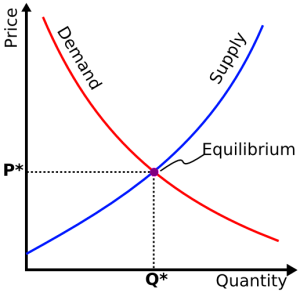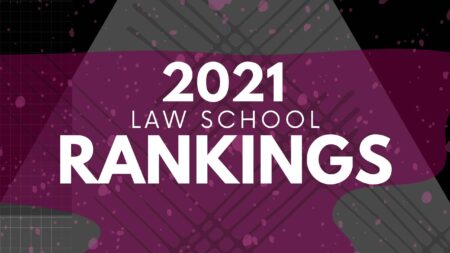
As we’ve discussed a lot lately, the number of people entering law school has been in ongoing free-fall over the last several years. At some point, you’d have to figure that the number of new lawyers being created would equal the number of jobs available, right? The National Jurist covered some recent debate over which future date exactly this equilibrium might be reached. You can read it here.
Paula Young, at professor of law at Appalachian School of Law in Virginia, predicts that available full-time legal jobs will exceed the number of law school graduates in 2017. But law professor Deborah Jones Merritt (also well-known for writing about law school reform, analyzed the same data and places the date around 2021.
I wanted to pipe in and suggest whose analysis is better.
Young assumes an 8% decline each year in the number of student enrolling in law school until at least the entering class of 2015. That’s a big decline. Laws schools should manage to slow falling enrollment by a lot in the next couple years, so it’s unlikely we’ll see anything quite that big.
An ongoing 8% decline year over year would be disastrous and would result in a lot of schools closing. They’ll avoid that by cutting admissions standards/providing scholarships.
Also, there is evidence the decline is already slowing. Last year, the numbers of people taking the LSAT fell a smaller 13.4%, compared with 16.2% the year before. Steadying numbers there will mean smaller drops in enrollment year to year.
Merritt agrees that 8% a year decline is an overestimate and also suggests that Young screwed up her calculation by including “JD advantage” jobs in to the available job figure. JD advantage jobs are those where a law degree is maybe preferred but not required to perform the job. She says that the class of 2012 found only 26,066 full-time legal jobs (that’s looking 9 months after graduation). Even assuming Young’s steep 8% year over year decline, that means true equilibrium would not be reached until 2021.
Merritt’s calculation is the better figure to stake your future on. There has been strong evidence that people are not happy with JD advantage jobs and prefer jobs that require a JD.
Really, don’t expect the market to ever reach full equilibrium. As the National Jurist points out, the law profession has never done better than placing about 85% of it’s graduates into legal jobs, at least in modern history. As the demand for lawyers picks back up, potential law students see it coming and go back to law school. You can always count on at least some competition to obtain legal jobs.
It’s worth noting that no matter how you slice it, job prospects are improving. Is this worth celebrating? A little bit. However, the main reason fewer and fewer people are going to law school is that tuition costs are too damn high. If we can find some way to keep the number of new lawyers down that doesn’t involve pricing a lot of people out, we’ll all be a lot happier.
If you are considering law school, try anything and everything to become part of the group that isn’t grossly overpaying for law school. Don’t miss this post on how to take advantage of the law school applications and enrollment drop.




1 Comment
I dont think so..